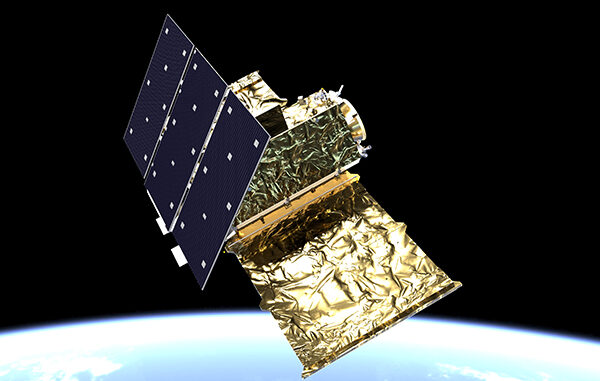
Thales Alenia Space, a joint venture between Thales (67 %) and Leonardo (33 %), announced today that it has signed a 482 Meuro contract with the European Space Agency (ESA) to build the Copernicus Radar Observation System for Europe in L-band (ROSE-L) environmental monitoring satellite, as part of Europe’s Copernicus program, the first tranche being 90 M euro.
Copernicus is an Earth observation program led by the European Commission with the European Space Agency ESA coordinating and managing the Space component. It provides for the Sentinel satellites series and Earth observation data for environmental protection, climate monitoring, natural disaster assessment and other social tasks.
Thales Alenia Space will serve as prime contractor for this program with Airbus Defence and Space as main partner for the radar instrument. This mission responds to the requirements expressed by both the Land Monitoring and the Emergency Management services. Its target applications are: soil moisture, land cover mapping, crop type and status discrimination, forest type/forest cover (in support to biomass estimation), food security and precision farming, maritime surveillance and natural and anthropogenic hazards.
In addition, the mission will contribute to the operational monitoring of the cryosphere and polar regions including sea ice mapping and land ice monitoring. Other emerging applications will be possible by the synergetic and complementary observations with C-band and X-band SAR systems.
ROSE-L is a 3 axis stabilized satellite based on the new Thales Alenia Space Multi-Mission Platform product line (MILA) and will embark the L-Band Synthetic Aperture Radar (SAR) Instrument dedicated to the day-and-night monitoring of land, ice and oceans offering improved revisit time, full polarimetry, high spatial resolution, high sensitivity, low ambiguity ratios and capability for repeat-pass and single-pass cross-track interferometry. It is based on a 5-panel deployable 11 m x 3.6 m L-Band, highly innovative and lightweight planar Phased Array Antenna (PAA). The satellite will also carry a set of 3 Monitoring Cameras (CAM) to monitor the deployment of the SAR antenna and the solar arrays.
“With this contract, Thales Alenia Space confirms its positioning as a key player in Earth Observation and Environmental missions. For services such as the Copernicus Emergency Management Service (EMS) in particular, ROSE L data will allow to reduce time between the occurrence of a natural or anthropogenic disaster and the first post-disaster image which is of crucial importance for citizen security”, declared Hervé Derrey, CEO of Thales Alenia Space.
Massimo Comparini, Senior Executive Vice President Observation, Exploration and Navigation at Thales Alenia Space added: “Thales Alenia Space will capitalize on its flight proven heritage on Radar Earth observation programs to serve this new mission. ROSE-L will provide additional European radar imaging capacity above and beyond that provided by Sentinel-1 and thus an opportunity to increase coverage at European and Global level, reducing the time intervals between successive radar images.”
The platform based on the new MILA platform product line, will also be compliant with space debris mitigation requirements using demisable technologies for clean space requirements and mechanical Interfaces compatible with a possible future On Orbit Servicing capability.
ROSE L will be compatible with Vega-C and Ariane 6-2, it will weight 2,060 kg at launch and will be positioned at 700 km altitude.
Since the longer L-band signal can penetrate through many natural materials such as vegetation, dry snow and ice, the mission will provide additional information that cannot be gathered by the Copernicus Sentinel-1 C-band radar mission. It will be used in support of forest management, to monitor subsidence and soil moisture and to discriminate crop types for precision farming and food security. In addition, the mission will contribute to the monitoring of polar ice sheets and ice caps, sea-ice extent in the polar region, and of seasonal snow.
Thales Alenia Space in Belgium will provide the Power Control and Distribution Unit (PCDU) and the Solar array Photovoltaic Assembly (PVA), Thales Alenia Space in Switzerland the monitoring camera, Thales Alenia Space in Spain the Ka-band Transmission Assembly, the Remote Interface Unit (RIU) and the S-band Transponder. Leonardo will provide the Star Trackers.
Drawing on over 40 years of experience and a unique combination of skills, expertise and cultures, Thales Alenia Space delivers cost-effective solutions for telecommunications, navigation, Earth observation, environmental management, exploration, science and orbital infrastructures. A joint venture between Thales (67%) and Leonardo (33%), Thales Alenia Space also teams up with Telespazio to form the parent companies’ Space Alliance, which offers a complete range of services. Thales Alenia Space posted consolidated revenues of approximately 2.15 billion euros in 2019 and has around 7,700 employees in nine countries



Be the first to comment